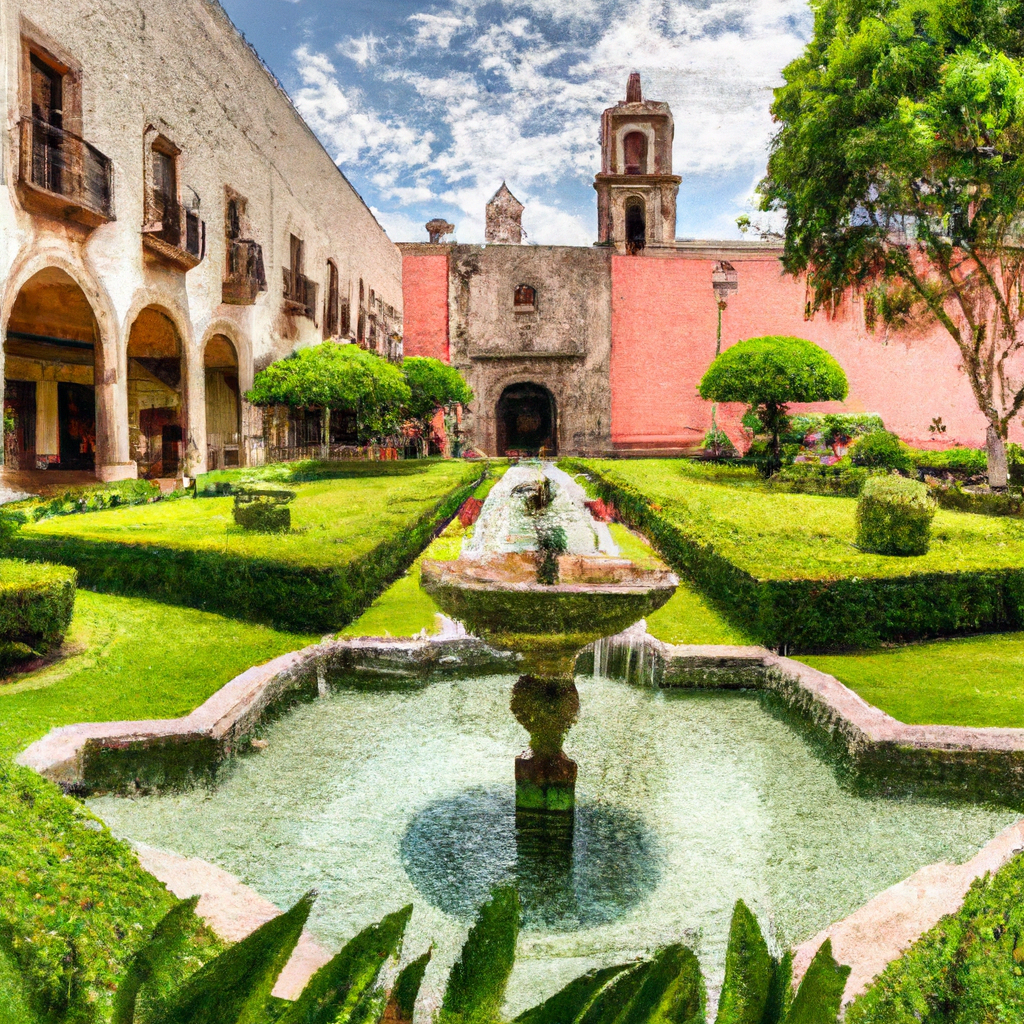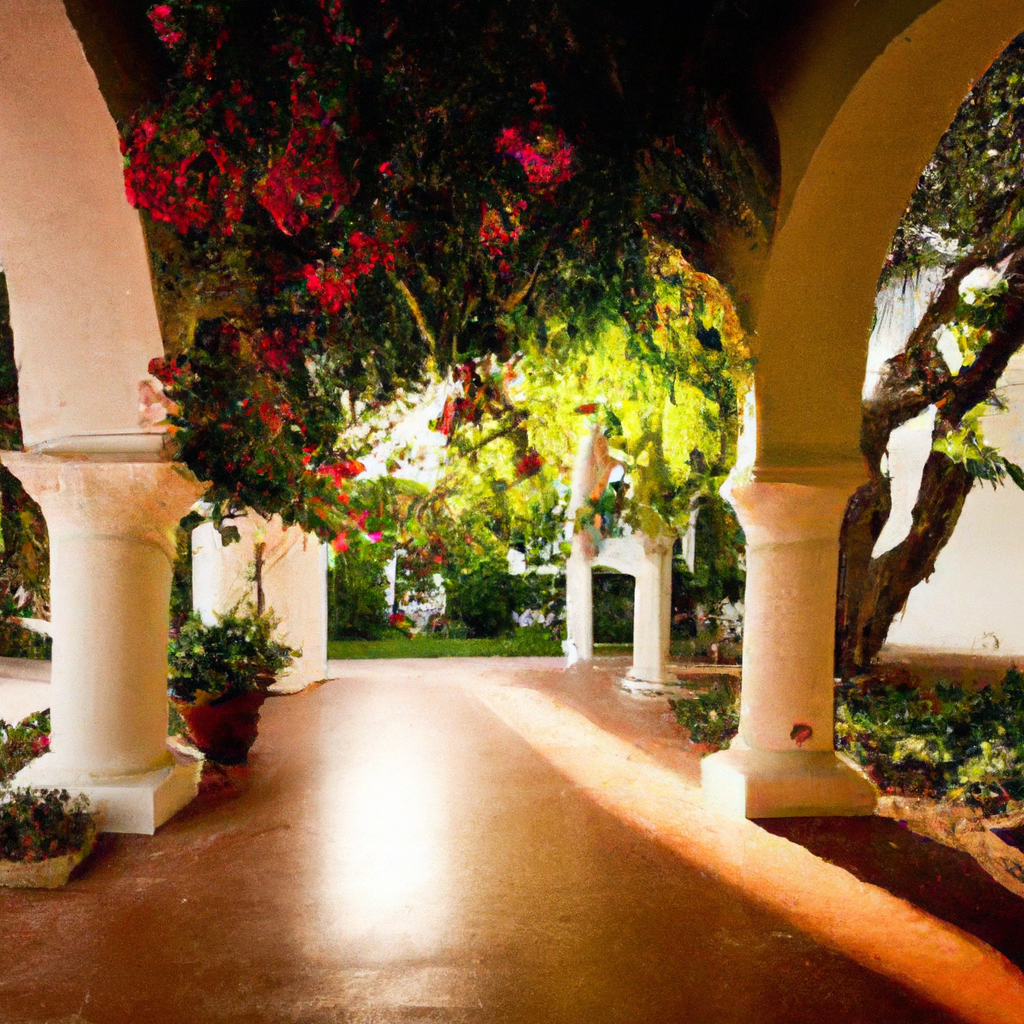If you’ve ever wanted to step back in time and witness the architectural splendor of Mexico’s historic haciendas, then get ready for a visual feast. From elegant courtyards adorned with intricate stone carvings, to stunning archways that lead to lush gardens, these haciendas embody a bygone era of opulence and grandeur. Each one has its own unique charm and story to tell, making them an enchanting destination for history enthusiasts and architecture lovers alike. So, grab your passport and get ready to delve into the fascinating world of Mexico’s historic haciendas.

The History of Mexican Haciendas
Colonial Origins
The colonial origins of Mexican haciendas can be traced back to the 16th century, when the Spanish arrived in Mexico and established their rule. Haciendas were large estates that were granted to Spanish settlers, known as hacendados, by the Spanish Crown. These estates were used for agriculture, particularly for the production of crops such as sugar, cotton, and indigo.
Evolution of Haciendas over Time
As the Spanish colonial rule in Mexico extended, haciendas evolved and became more prevalent throughout the country. Over time, haciendas grew in size and wealth, with some becoming self-contained communities. They included not only farming and livestock operations but also various other facilities such as mills, factories, and even schools and churches.
Importance of Haciendas to Mexico’s History
Haciendas played a vital role in shaping Mexico’s history. They served as centers of economic activity and became the backbone of the Spanish colonial economy. Haciendas contributed significantly to the accumulation of wealth, social stratification, and the development of regional identities in Mexico. They played a crucial role in the exploitation of indigenous labor and the preservation of the feudal structure that defined Mexican society for centuries.
Architectural Features of Haciendas
Influences from Spanish Colonial Architecture
The architectural features of Mexican haciendas were heavily influenced by Spanish colonial architecture. Haciendas often incorporated elements such as thick adobe walls, arched doorways and windows, and red-tiled roofs. These features, reminiscent of Spanish colonial style, not only provided functionality but also added to the aesthetic charm of the haciendas.
Regional Variations in Design
While the Spanish colonial influence was prevalent, there were also regional variations in the design of haciendas. Different geographical areas of Mexico had their own architectural styles and building materials, leading to unique variations in the design of haciendas. For example, in the Yucatan Peninsula, haciendas often featured ornate facades and intricate stonework, reflecting the region’s Mayan heritage.
Courtyards and Gardens
One of the distinguishing features of Mexican haciendas was their beautifully designed courtyards and gardens. These spaces served as central gathering places, providing a tranquil escape from the arduous work on the estates. Courtyards often featured lush vegetation, fountains, and decorative elements such as statues and colorful tiles, creating a serene oasis within the hacienda.
Decorative Elements
Haciendas were adorned with various decorative elements that showcased the wealth and status of the hacienda owners. Elaborate ironwork, intricate wood carvings, and decorative plasterwork were commonly found throughout the interiors of haciendas. These decorative elements added a touch of elegance and sophistication to the hacienda architecture.
Famous Haciendas in Mexico
Hacienda de Chautla
Hacienda de Chautla, located in the state of Puebla, is a well-known hacienda that dates back to the 17th century. With its imposing stone facade, lush gardens, and an impressive lake surrounded by mountains, Hacienda de Chautla is a popular tourist destination and has been restored to its former glory.
Hacienda San Miguel Regla
Another prominent hacienda is Hacienda San Miguel Regla, situated in Hidalgo. This hacienda stands out for its striking Gothic architecture and picturesque location amidst waterfalls and lush vegetation. Today, it operates as a luxury hotel and offers a glimpse into the opulent lifestyle of the hacienda owners.
Hacienda Uayamon
Hacienda Uayamon, located in Campeche, is renowned for its stunning colonial architecture and serene surroundings. This hacienda has been converted into a luxury resort, allowing guests to experience the rich history and beauty of the property while enjoying modern amenities.
Hacienda Temozon
Hacienda Temozon, found in the Yucatan Peninsula, is another notable example of a restored hacienda. Its elegant architecture, featuring neoclassical and Mayan influences, makes it a captivating place to visit. Hacienda Temozon has been transformed into a luxury hotel that immerses visitors in the region’s cultural heritage.
Hacienda Yaxcopoil
Hacienda Yaxcopoil, located near Merida, showcases the grandeur of Mexican haciendas and their historical significance. This hacienda houses a museum that displays artifacts and provides insights into the hacienda’s rich history. Visitors can explore the beautifully restored rooms and learn about the hacienda’s role in the region’s economy.
The Decline and Revival of Haciendas
Causes of Decline
The decline of haciendas in Mexico can be attributed to several factors. The Mexican Revolution of the early 20th century brought about significant changes in the country’s political and social landscape, leading to the confiscation and redistribution of many haciendas. The agrarian reforms aimed to break up large estates and distribute land to the rural population, resulting in the fragmentation and decline of haciendas.
Adaptive Reuse of Haciendas
Despite their decline, many haciendas have found new life through adaptive reuse projects. Haciendas have been repurposed into various establishments, including hotels, restaurants, and cultural centers. By preserving and repurposing these historic structures, the architectural and cultural heritage of the hacienda era is being safeguarded for future generations.
Tourism and Economic Impact
The revival of haciendas has had a positive impact on Mexico’s economy, particularly in the tourism sector. The preservation and restoration of haciendas have attracted tourists from around the world, who are drawn to the architectural grandeur and historical significance of these estates. Hacienda tourism has created employment opportunities and contributed to the economic development of the regions where haciendas are located.

Preservation Efforts for Haciendas
Government Initiatives
The Mexican government has implemented various initiatives to preserve and protect haciendas. National programs have been established to provide incentives and financial support for the restoration and conservation of historic haciendas. Additionally, legislation and regulations have been put in place to ensure the proper maintenance and preservation of these cultural treasures.
Private Restoration Projects
Private individuals and organizations have also played a crucial role in the preservation of haciendas. Many haciendas have been acquired and restored by private investors who recognize the cultural and economic value of these properties. Through their efforts, these individuals have contributed to the revitalization of haciendas and the surrounding communities.
Challenges and Successes
Preserving haciendas comes with its own set of challenges. The cost of restoration, maintenance, and ongoing preservation efforts can be significant. Additionally, the need for sustainable tourism practices and community engagement is essential to ensure the long-term viability of haciendas. Despite these challenges, the successes in preserving and reviving haciendas highlight the importance of these architectural treasures and their contribution to Mexico’s cultural heritage.
Exploring Haciendas Today
Hacienda Hotels and Resorts
Many haciendas have been transformed into luxurious hotels and resorts, allowing visitors to experience the charm and elegance of these historic estates. These establishments often offer modern amenities while preserving the architectural integrity and historical ambiance of the haciendas. Staying at a hacienda hotel or resort provides a unique opportunity to immerse oneself in the rich history and architectural grandeur of Mexico’s past.
Hacienda Museums
Several haciendas have been converted into museums, offering visitors a chance to learn about the history and cultural significance of these estates. Museums within haciendas display artifacts, photographs, and interactive exhibits that provide insights into the lives of the hacienda owners and the workers who labored on the estates. These museums serve as educational and cultural hubs, promoting a deeper understanding and appreciation of Mexico’s heritage.
Hacienda Tours and Experiences
For those seeking a more immersive experience, hacienda tours and experiences are available. These tours often include guided visits to haciendas that showcase their architectural features, gardens, and historical significance. Visitors can gain a deeper understanding of the hacienda lifestyle, learn about the local traditions and customs, and even participate in activities such as traditional cooking classes or horseback riding. These experiences offer a glimpse into the rich cultural tapestry of Mexico’s hacienda heritage.
Hacienda Architecture in Modern Design
Incorporating Hacienda Elements in Contemporary Architecture
The architectural style of Mexican haciendas continues to inspire modern design, both in Mexico and around the world. Architects and designers often incorporate hacienda elements, such as arched doorways, courtyards, and traditional materials, into contemporary buildings. This fusion of old and new creates a unique aesthetic that pays homage to the rich history and architectural grandeur of the haciendas.
Hacienda-Inspired Interior Design
The influence of hacienda architecture extends beyond the exterior of buildings. Hacienda-inspired interior design has gained popularity, characterized by the use of natural materials, vibrant colors, and traditional textiles. Incorporating elements such as decorative tiles, wrought iron accents, and rustic wood furniture can create a warm and inviting atmosphere reminiscent of the hacienda style.
Haciendas as Cultural Heritage
Preserving Mexican Identity
Haciendas are an integral part of Mexico’s cultural identity. They represent a bygone era and symbolize the fusion of indigenous and Spanish influences in Mexican history. Preserving haciendas allows Mexicans to connect with their cultural heritage and serves as a reminder of the country’s complex past. By valuing and protecting these architectural treasures, Mexico can safeguard its unique identity for future generations.
Contribution to Cultural Tourism
Haciendas have become significant attractions for cultural tourism in Mexico. Visitors from around the world are drawn to the beauty and authenticity of these estates, contributing to the economic growth of the regions where haciendas are located. Cultural tourism not only generates revenue but also fosters a deeper understanding and appreciation of Mexico’s heritage, bridging the gap between different cultures and fostering cultural exchange.
Appreciating the Architectural Grandeur
The architectural grandeur of Mexican haciendas is a testament to the craftsmanship and artistry of the past. From the intricate details of decorative elements to the harmonious blending of architectural styles, haciendas represent an architectural legacy that continues to captivate and inspire. By appreciating and preserving the architectural grandeur of haciendas, we acknowledge the significance of these cultural landmarks and honor the historical narratives they embody.
Conclusion
The history of Mexican haciendas is a rich tapestry that weaves together elements of Spanish colonial influence, regional diversity, and social dynamics. The architectural features of haciendas, influenced by Spanish colonial design and regional variations, continue to fascinate and inspire. Famous haciendas, both restored and repurposed, provide a glimpse into the past while contributing to the economic and cultural development of Mexico. Preservation efforts, driven by both the government and private individuals, play a crucial role in safeguarding Mexico’s hacienda heritage. Exploring haciendas today through hotels, museums, tours, and experiences allows us to appreciate their architectural grandeur and connect with Mexico’s cultural identity. Haciendas serve as a reminder of our shared history and the value of preserving our architectural and cultural treasures for future generations to cherish.
